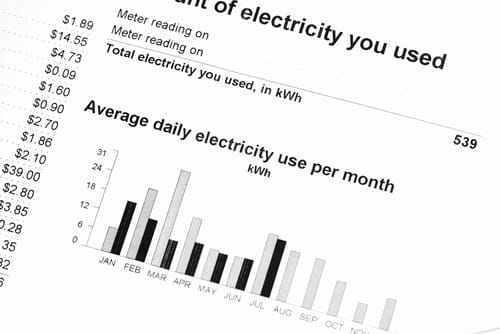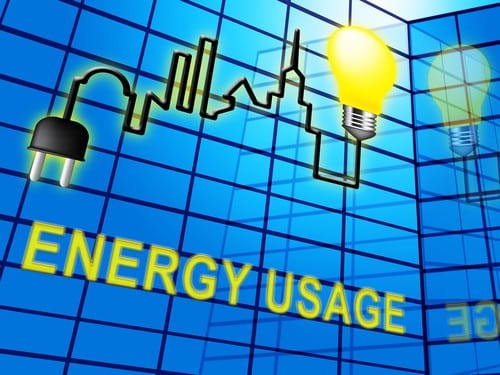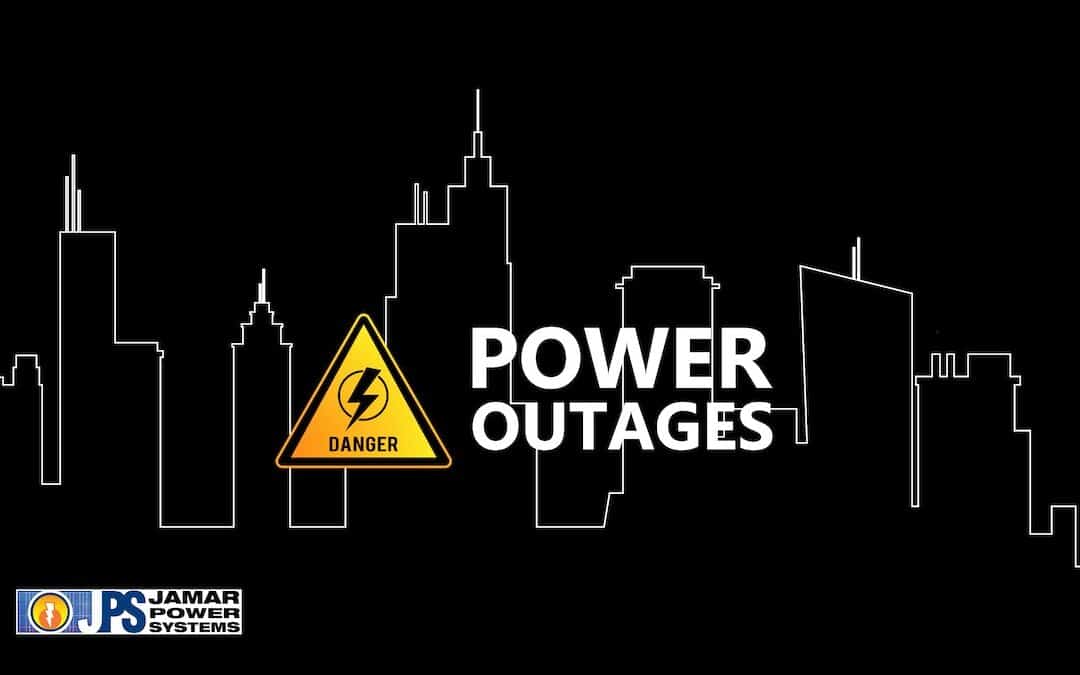How long can a solar battery power a house during a blackout?
How long a solar battery system can power your home during an electric utility blackout depends on several factors, including:
• Electricity your home uses each day
• Size of solar batteries
• Capacity of the solar batteries
• Local climate
• Number & type of appliances used
• Energy efficiency of appliances used
In 2021, the average daily electricity consumption for a U.S. residential utility customer was approximately 30-kilowatt hours (kWh). This can vary greatly depending on factors such as local climate, size of the home, insulation rating, and a variety of other variables. (source)
For example, two fully charged Tesla Powerwall 2 Lithium Ion solar batteries can provide up to 28.8 kWh of electricity before recharge. The manufacturer states they can be fully discharged (100% DoD) and recharged without harm. As a result, those two Powerwalls can provide close to the daily consumption of the average American home.
It’s important to note that not all solar batteries can be fully discharged without damaging the battery. Each manufacturer has a recommended “depth of discharge” not to exceed.
Most Lithium Ion or Lithium Iron batteries allow for a DoD between 80 to 100%. As a result, using the entire kilowatt-hour rating of the battery may not be recommended.

To know exactly how much electricity your household uses each day, examine your electric bill for how many kilowatt hours you use.
To get a better idea for each month, call your local electric utility company and ask for your monthly kWh usage for each of the last 12 months.
Next, ask yourself if you plan to add or reduce that consumption in the near future.
Will you be adding or reducing electric loads?
Is installing a pool or spa in your near future? How about an electric vehicle? If so, ask the dealer for the electrical specifications of each.
You may have children who are growing and will leave the household soon, decreasing electricity consumption.
Plan your consumption accordingly.
Once you have your average daily consumption, you can begin to size your battery needs accurately.
Something to think about here in San Diego County is that the summer months are the most prone to utility power outages due to the combination of extreme heat and powerful storms that can damage power lines.
With that in mind, you may wish to plan the sizing of your battery backup power system to handle your average daily electricity consumption (kWh) during the summer months.
In case of a power outage, certain types of emergency electric loads in a house are essential for ensuring the safety and comfort of the occupants. Some of these loads include:
- Lighting: Portable lights or battery-powered flashlights can provide lighting during an emergency power outage.
- Communications: Cell phones with backup batteries can make calls or send messages during a power outage. WiFi and computers, however, will require a power source.
- Refrigeration: A generator or a solar battery can power refrigerators and freezers to keep food from spoiling.
- Medical equipment: Devices such as oxygen concentrators or ventilators require a consistent power source.
- Heating & Cooling: central heating and air conditioning systems will require a consistent power source.
- Cooking: Propane or natural gas stoves can cook food during a power outage if the stove is not electric. Though they often use electronic ignition, so you may have to light them with a match or lighter.
- Water pumping: A generator or solar battery can provide water during a power outage if your home relies on an electric well pump.
- Water heating: a gas-powered water heater will continue to operate during an electric power outage. Tankless water heaters and electric water heaters, though, use electricity, so you’ll need a power source for them to continue to operate.
It’s important to have a backup plan for these essential loads in case of an emergency power outage.
Since 2000, California public utilities have reported over 2,600 power outages. And in 2022, 142 were reported. Most of these outages were weather-related events such as lightning strikes and high winds. (source)
In addition to these natural phenomena, there were numerous other occasions when equipment failures or power lines becoming overloaded due to increased demand caused multiple outages throughout the county.
These incidents resulted in significant losses for businesses and individuals, leaving people without heat or air conditioning and electricity for vital appliances during extreme weather conditions.
As a result, planning for power outages is a wise move, especially if you have medical equipment needs, run a business from home, or have small children or older adults in the home.
Since solar batteries can be expensive, most homeowners will probably not choose to build a backup system that runs the entire home without shutting down some electric loads and only using the necessary ones.
The next step is to plan what emergency electric loads your household will need during a utility power outage.

Which appliances are vital to your household during utility blackouts?
A special comment on cooling – air conditioning is your most power-consuming activity, and it can quickly drain your battery in a lengthy power outage. To make sure you have enough power to keep cool during outages, extra batteries and solar energy sources are suggested. For this reason, many households choose not to cool their homes during blackouts.
- Coffeemaker
- Computers & Tablets
- Central Air Conditioner
- Central Heating/Furnace
- Clothes Dryers
- Dishwasher
- EV Charger
- Hair Dryer
- Lights
- Medical Equipment
- Microwave oven
- Ovens/stoves
- Refrigerator/Freezer
- Water Heater
- Washing Machine
- Window Air Conditioner
- WiFi
Next, you’ll need to identify each of their electric loads in Watts from their labeling or owner’s manuals and how many hours each appliance will need to run to calculate the kilowatt hour (kWh) consumption.
Some appliances will show Watts used, and others will provide Amperage.
Here are two formulas to help convert those into kilowatt hours (kWh).
Amps x 120 = Watts
(Watts x hours used) divided by 1000 = kilowatt hours (kWh)
As an alternative to all of that investigating and mathematics, you can install a device like the Wiser Energy Monitoring system to help identify the daily loads of each appliance.
Another option is to hire a skilled Electrician (like us!) to come out and calculate your essential loads for a battery backup system.

Frequently Asked Questions
Will solar panels alone work in a blackout?
Solar panels tied to the utility grid and your home will not supply energy to your home or the utility grid during a local power outage.
This is a safety precaution because the power company has to send repair crews to fix the electric grid in your local area that went down. Utilities don’t want your solar electricity going into their grid and electrocuting repair crews.
All solar inverters are required to shut down when the sensor inside them identifies that the utility grid is down.
This is why solar batteries are needed to store energy your home can safely use during utility outages.
Exception: the Enphase Sunlight Backup system is the only solution we’re aware of that will continue to provide homeowners who want basic, daytime protection from grid outages without having to invest in a battery.
With the Enphase Sunlight Backup system, you can keep essential appliances running even during a power outage—and all without draining your wallet.
Is it possible to run a whole house on solar power?
Yes, when a solar panel and battery system are properly sized to your electricity consumption, it’s possible to run your whole house with solar power alone.
How long will a 10 kW battery power my house?
A fully charged 10 kW battery with an allowable 100% depth of discharge can power the average American house for approximately eight (8) hours based on the average daily electricity consumption of thirty (30) kilowatt hours usage of a U.S. household. This depends on many factors and is only shown as an example.
What happens to solar power when the batteries are full?
When the solar batteries are fully charged, all solar power produced will either be used by the home or sent back into the utility grid for credits.
During a blackout, the solar panels will turn off when the battery is full.
If the utility outage lasts more than one day will the solar panels recharge the batteries?
In most cases the batteries and inverters will create an “islanding” or “microgrid” effect and allow for recharging the batteries as long as the batteries do not fully discharge 100%.
For more information see our additonal article on solar batteries.
If you’re located in San Diego County California, use the form below to request a load analysis and solar battery quote.
Get A Load Analysis & Solar Battery Quote
We are proud to be certified installers of:
- Enphase Energy’s Battery Storage System
- Tesla Powerwall 2 Storage System
- NeoVolta Energy Storage Systems
- Fortress Solar Batteries
If you don’t have a solar power system for your home just yet, get a FREE Solar Analysis scheduled today. You can choose to have it done virtually or in person.
If you already have solar powering your home and are considering a battery backup system, contact us here today to discuss it with our specialists.
Related articles:
2025 Federal tax credit changes for solar & solar batteries
Solar panel monitoring service
Battery storage system fundamentals
Peak Shaving: Invest in your home’s energy future for significant ROI
Why a battery makes financial sense with solar panels now under NEM 3.0
How long will a solar battery last during a power blackout?
How many batteries are needed to power your home?
How many years do solar batteries last?
Solar Battery or generator for emergency backup power?
How to check if your solar panels are charging the solar battery
Complete Guide to Solar PPA, Lease vs Buying Solar
How to choose a solar installer
Get a FREE solar anaylsis to see if solar energy or a battery is right for your home
- 2025 Federal Tax Credit Changes For Solar Panel Systems & Solar Batteries - July 8, 2025
- How Solar Batteries Work - March 4, 2024
- Solar Battery or Generator for Emergency Backup Power? - January 30, 2024



